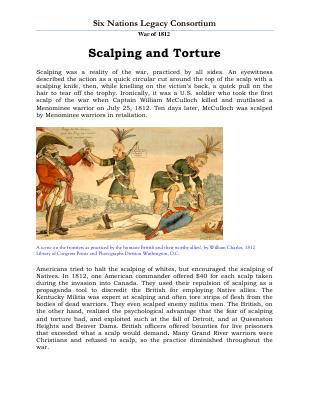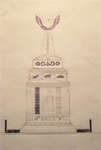Scalping was a reality of the war, practiced by all sides. An eyewitness described the action as a quick circular cut around the top of the scalp with a scalping knife, then, while knelling on the victim’s back, a quick pull on the hair to tear off the trophy. Ironically, it was a U.S. soldier who took the first scalp of the war when Captain William McCulloch killed and mutilated a Menominee warrior on July 25, 1812. Ten days later, McCulloch was scalped by Menominee warriors in retaliation.
Americans tried to halt the scalping of whites, but encouraged the scalping of Natives. In 1812, one American commander offered $40 for each scalp taken during the invasion into Canada. They used their repulsion of scalping as a
propaganda tool to discredit the British for employing Native allies. The Kentucky Militia was expert at scalping and often tore strips of flesh from the bodies of dead warriors. They even scalped enemy militia men. The British, on
the other hand, realized the psychological advantage that the fear of scalping and torture had, and exploited such at the fall of Detroit, and at Queenston Heights and Beaver Dams. British officers offered bounties for live prisoners that exceeded what a scalp would demand. Many Grand River warriors were Christians and refused to scalp, so the practice diminished throughout the war.




 This project was made possible with the support of the
This project was made possible with the support of the 